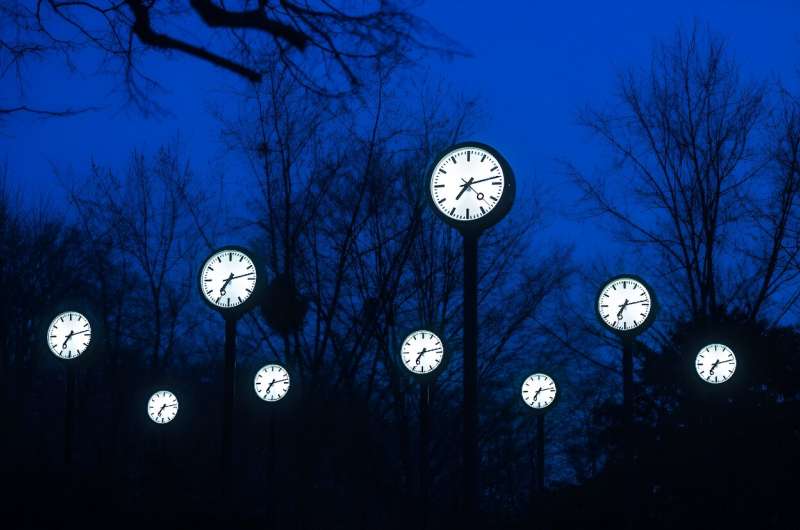Timekeeping, once a simple affair marked by the Earth’s rotation, has evolved into a complex dance between atomic precision and celestial mechanics. In the modern era, the synchronization of clocks relies on the delicate balance between Earth’s rotation and atomic time, a balance that is increasingly being disrupted by the effects of climate change. As scientists grapple with the implications of a shifting planet, the prospect of introducing a “negative leap second” into standard time emerges as a novel challenge. In this article, we delve into the intersection of climate change and timekeeping, exploring how melting polar ice and Earth’s unpredictable rotation are reshaping our understanding of time.
The Evolution of Timekeeping: From ancient sundials to atomic clocks, the measurement of time has undergone a remarkable evolution. For millennia, civilizations relied on the natural rhythms of the Earth—the rising and setting of the sun, the phases of the moon—to mark the passage of time. However, as technological advancements ushered in the atomic age, a new era of precision timekeeping emerged. Atomic clocks, which harness the oscillations of atoms to measure time, offered unparalleled accuracy, revolutionizing fields ranging from navigation to telecommunications.
Leap Seconds: Balancing Earth and Atomic Time: Despite the precision of atomic clocks, Earth’s rotation remains an imperfect timekeeper. The gradual slowing of our planet’s spin has led to a discrepancy between atomic time and the Earth’s rotation. To reconcile this disparity, timekeepers introduced the concept of leap seconds—brief adjustments to Coordinated Universal Time (UTC) that synchronize atomic time with Earth’s rotation. Yet, as Earth’s rotation accelerates due to melting polar ice, the prospect of a “negative leap second” emerges, challenging the conventions of timekeeping in unforeseen ways.
The Role of Climate Change: Climate change, driven by human activities, has far-reaching implications for Earth’s systems, including its rotation. The melting of polar ice caps alters the distribution of mass on Earth’s surface, subtly reshaping its rotation. As glaciers retreat and ice sheets diminish, the redistribution of water affects Earth’s moment of inertia, influencing its rotational speed. This complex interplay between climate change and Earth’s rotation underscores the intricate connections between human activities and the fundamental mechanisms of our planet.
Navigating Uncertainty: In the face of Earth’s unpredictability, scientists endeavor to understand the implications of a shifting climate on timekeeping. Duncan Agnew, a researcher at the University of California, San Diego, explores the potential impact of melting polar ice on Earth’s rotation in a recent study published in Nature. By analyzing satellite data and historical trends, Agnew sheds light on the delicate balance between climate change and timekeeping, revealing unexpected insights into the dynamics of our planet.
Challenges and Controversies: The prospect of a negative leap second raises thorny questions for timekeepers and technologists alike. Introducing such a leap second could pose significant challenges for computer systems worldwide, potentially disrupting critical operations reliant on precise timekeeping. Moreover, the unprecedented nature of a negative leap second complicates efforts to mitigate its impact, prompting calls for careful consideration and planning from experts in the field.
As scientists grapple with the implications of a changing climate on timekeeping, the need for collaboration and innovation becomes increasingly urgent. From refining models of Earth’s rotation to developing adaptive timekeeping strategies, researchers strive to navigate the complexities of a dynamic planet. By embracing uncertainty and embracing the challenges of a shifting climate, humanity can forge a path towards a more resilient and adaptable future.
In a world where time is both a constant and a variable, the effects of climate change pose profound challenges for timekeepers and scientists alike. From the potential introduction of negative leap seconds to the broader implications for global timekeeping infrastructure, the intersection of climate change and timekeeping demands careful consideration and proactive planning. By harnessing the power of scientific inquiry and technological innovation, humanity can navigate the complexities of a changing climate while preserving the integrity of our shared temporal framework. As we peer into the future, the quest to synchronize Earth’s rotation with atomic time serves as a poignant reminder of the interconnectedness of humanity and the natural world.
